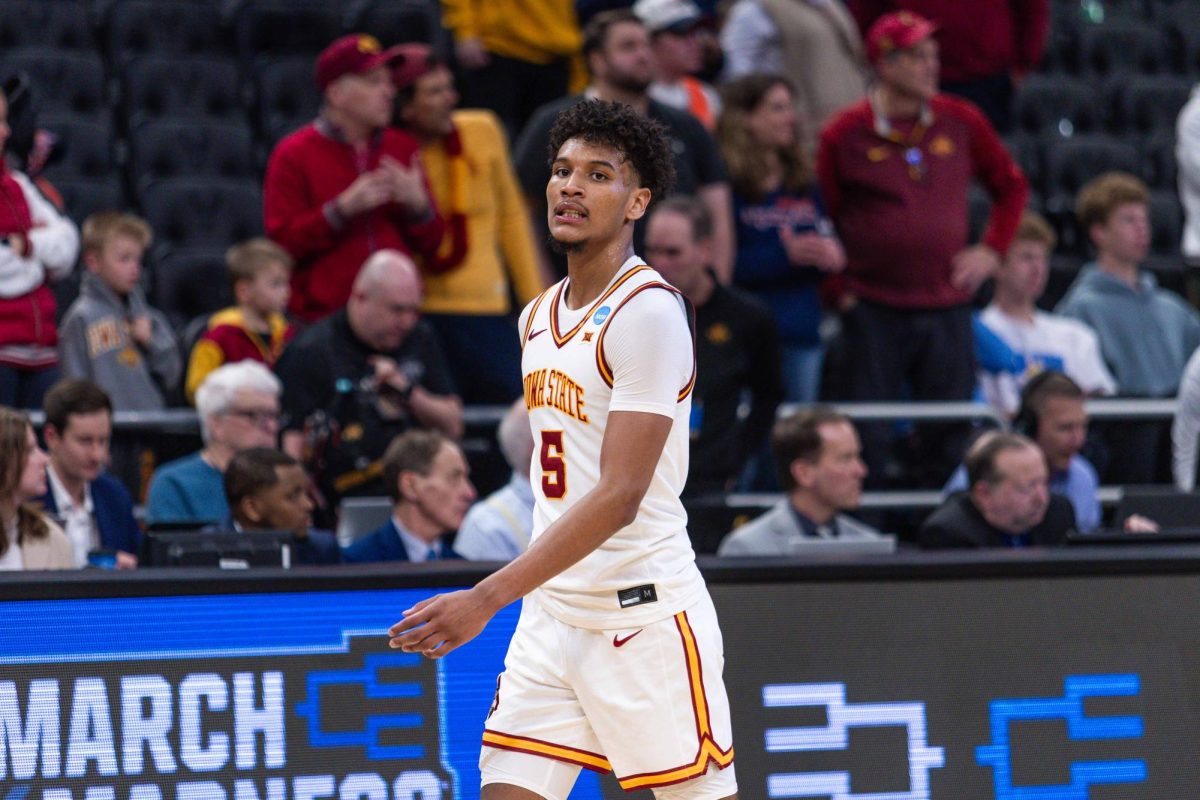NCAA to move three-point line to international distance among other rule changes
Chris Jorgensen/Iowa State Daily
Iowa State senior Nick Weiler-Babb attempts a three-point shot during the first half against Kansas State at the Big 12 Tournament. The NCAA announced a move to international three-point distance on Wednesday.
June 5, 2019
NCAA Division I basketball teams will be launching their three-point attempts from a longer distance next year — at the international three-point distance of 22 feet one-and-three-fourths inches.
The move to change the NCAA three-point range was among several changes made by the NCAA Men’s Basketball Rules Committee.
The change was made after the new distance had been used during the NIT postseason tournament the past two seasons. The rules committee said they received positive feedback from the participating coaches in the tournament.
In the 2019 NIT tournament, the teams averaged about one more three-point shots compared to the regular season and shot only 2% worse from long range.
With the line at the old 20-feet-9-inches, Iowa State shot 36.3% from three last season.
The committee wanted to make the lane more available for driving offensive players to help the offense spread out the defenders, and also make the three-point shot more difficult and reverse the prevalence of the three-point shot in college games.
While Division I teams will be playing with the extended three-point line next season, Division II and III teams will not have the change until the 2020-21 season.
Below are the other changes enacted by the NCAA Men’s Basketball Rules Committee:
The shot clock will reset to 20 seconds after an offensive rebound rather than the standard 30 seconds. The committee found that the offense is already in the front court and doesn’t need the extra time.
Players will be given a technical foul if they use derogatory language about an opponent’s race, ethnicity, religion, sexual orientation, gender etc.
Coaches can call a live-ball timeout in the last two minutes of the second half or any overtime periods. Coaches weren’t allowed to call any live-ball timeouts previously.
Instant replay can now be used to review basketball interference or goaltending in the last two minutes of the second half or any overtime periods.







